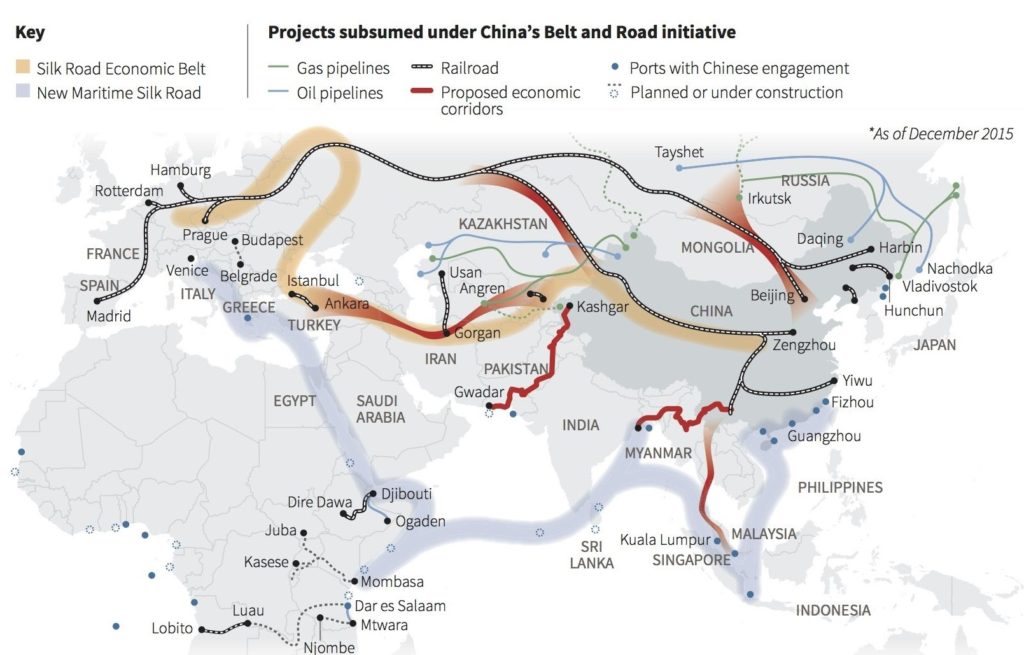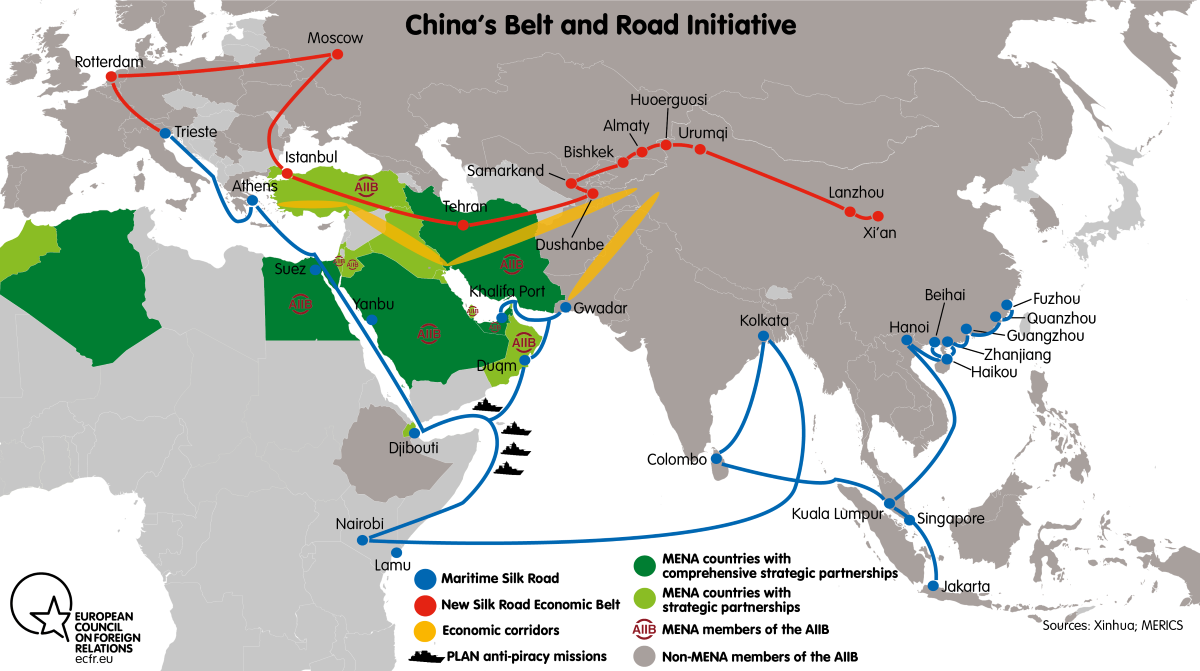
A presentation at the 5th Hongqiao International Economic Forum on Nov.5-6, 2022
President Xi Jinping made history by opening the 20th Congress of the Communist Party of China (CPC), when he announced the beginning of a New Era of socio-political development with focus on the Global South.
The initiative embarks on a path of peaceful modernization and moderate prosperity, bringing more equilibrium to a world often beset by conflicts.
He made again history by having been confirmed for his 3rd Five-Year term as China’s leader. This is good for continuity of a successful policy of growth and for the transformation of China as moderately prosperous society – a socialism with Chinese characteristics.
The next five years will focus on expanding the policy of growth and transformation with more emphasis on peacefully integrating the Global South.
—-
President Xi pointed out, there would be no change in strategy vis-à-vis Taiwan, Hong Kong and China’s zero-covid policy. Regarding Taiwan, China is aiming at a nonviolent unification. This is entirely an internal matter. China would not tolerate any foreign intervention.
—–
The new 7 member Standing Committee are poised to make a strong team to tackle the many challenges China will face during the next 5 years, envisaging an even longer horizon, until 2049, the Centenario of Modern China.
China has a stellar record of success stories during her 70-plus years of peaceful existence as a modern socialist country. Unfortunately, they are mostly ignored by western politicians and journalists.
Just to mention a few of the many achievements during President Xi’s twenty-year tenure.
Ø Poverty reduction – lifting 800 million people out of poverty (equivalent to ten times the population of Germany);
Ø Health – impressive improvement in China’s health system; increasing China’s average life expectancy from about 71 years in 2000 to close to 79 years in 2021. This exceed many so-called developed countries (compare this to the US – 76 years life expectancy in 2021).
Most Chinese have access to FREE health care – which is rare in the west.
Ø Dedollarization – is achieved through the gradual debunking of the sanction-prone US-dollar, by concentrating on developing internal and Asian regional markets and through a massive de-dollarization program, which includes:
- Development of a Chinese digital central bank yuan, for use in international transactions;
- China and ever more Asian and western countries are trading in Yuan and local currencies;
- China’s economy and that of other Asian countries will be backed by their actual economic outputs – and most-likely by a basket of commonly used commodities;
- Attracting many (former) “western orbit countries” into Asian regional organizations, such as (a) the Shanghai Cooperation Organization (SCO); (b) the Regional Comprehensive Economic Partnership Agreement (RCEP) of ASEAN+5 countries (15 altogether) – which is the worldwide largest free trade agreement; and (c) the BRICS-plus, …. to mention just a few. These countries will trade in other currencies than the US-dollar.
Ø The Belt and Road Initiative – BRI – may be the Crown Jewel of China’s achievements during the past two decades. It is a direct Initiative of President Xi’s, launched in 2013. It will celebrate next year its tenth Anniversary.
BRI has created already at least six land and maritime “roads” that are gradually spanning the globe to connect people of different cultures with infrastructure, with projects for joint research, learning, as well as the development of alternative sources of energies — and much more.
At present more than 150 countries and international organizations are connected to the Belt and Road.
The most recent addition of a BRI connection, may be the Port of Hamburg, a Chinese participation, for which the German Government has just given its Green Light.

Key Elements of China’s projected and visionary New Era include
Continuation and enhancement of the new autonomous monetary system – detached form the fiat “dollar-world”. The new system could become a trailblazer for other countries. It might become the gateway for a sanction-free world economy.
Embracing the Global South – proposing peaceful development and detachment form the fangs of western exploitation, while offering partner countries of the Global South technical assistance and development projects addressing their socioeconomic priorities.
The Belt and Road, beyond its worldwide expansion, may become a first-class instrument to implement a program of peaceful modernization of the Global South, preparing joint ventures and connections between countries and regions, including for trade, as well as research into alternative energy resources.
China’s Governance miracle is the result of a long-term strategic vision. Her peaceful and effective governance has successfully dealt with crises and problems. The path of the past will lead to successful governance into the future.
Key Governance Challenges ahead may include
- Peaceful integration of Taiwan into mainland China;
- Maintaining Hong Kong’s internal peace, protecting HK from foreign interference;
- Becoming rapidly self-sufficient in the semi-conductor production, for which the Biden Administration is attempting barring China from access to the needed technology.
This new US sanctions scheme seems to be an unrealistic endeavor. China is already master of these technologies. Besides, China disposes of the necessary raw materials, rare earths, for which the West depends largely on China’s exports.
——
In conclusion
China has been successful in her 70-plus years existence, because of her peaceful approach to development and to selective growth. China is pursuing a multipolar world, rather than hegemonic power.
China uses her peaceful governance to address injustices and irrationalities in the current international order, including in conflicts with the US and its western allies.
Peaceful global governance initiatives include, the BRI; Global Development Initiative, Global Security Initiative; BRICS+ Mechanism; Asian Infrastructure Investment Bank (AIIB); Shanghai Cooperation Organization (SCO); the world’s largest, ever, Free Trade Agreement, the Regional Comprehensive Economic Partnership (RECP), and more.
Enhancing Global Governance initiatives is China’s long-term vision, an important feature of what distinguishes the East from the West.
The 20th CPC Congress outlines an outlook to 2035 – with a horizon 2049 – pointing to the 100th Anniversary of the “New Communist China” – that successfully evolved to a socialism with Chinese characteristics.
—–
As a momentum for closing, please allow me to present a brief 3-minute video:
| “Who Am I” – Chinese Path to the Success of the CPC https://jeffjbrown.substack.com/p/3-minute-video-who-am-i-or-why-the?utm_source=substack&utm_medium=email#play |
——–
Peter Koenig is a geopolitical analyst and a former Senior Economist at the World Bank and the World Health Organization (WHO). He is the author of Implosion – An Economic Thriller about War, Environmental Destruction and Corporate Greed; and co-author of Cynthia McKinney’s book “When China Sneezes: From the Coronavirus Lockdown to the Global Politico-Economic Crisis” (Clarity Press – November 1, 2020) Peter is a non-resident Senior Fellow of the Chongyang Institute of Renmin University, Beijing. He is also a Research Associate of the Centre for Research on Globalization (CRG).
Published by The 21st Century
The views expressed in this article are solely those of the author and do not necessarily reflect the opinions of 21cir.com.
